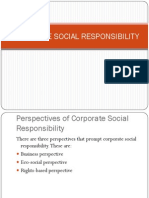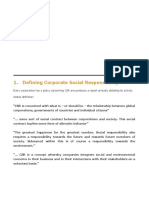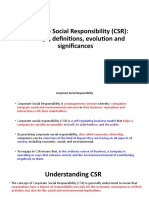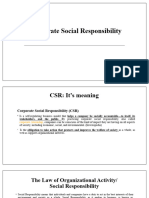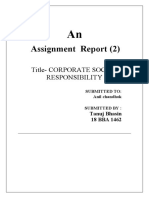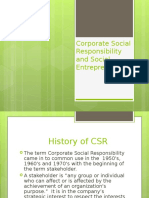0% found this document useful (0 votes)
185 views61 pagesJuan F. Pujol, JR., Mba Bac 4
Corporate social responsibility (CSR) involves companies integrating social and environmental concerns into their business operations. There are three key principles of CSR - sustainability, accountability, and transparency. Sustainability involves considering the long-term impacts of actions on future resource availability. Accountability means taking responsibility for social and environmental impacts by quantifying and reporting them. Transparency ensures impacts are apparent from company reporting. CSR has become more prominent due to factors like poor treatment of customers, employees, and the environment.
Uploaded by
Patrick AdiacCopyright
© © All Rights Reserved
We take content rights seriously. If you suspect this is your content, claim it here.
Available Formats
Download as PPTX, PDF, TXT or read online on Scribd
0% found this document useful (0 votes)
185 views61 pagesJuan F. Pujol, JR., Mba Bac 4
Corporate social responsibility (CSR) involves companies integrating social and environmental concerns into their business operations. There are three key principles of CSR - sustainability, accountability, and transparency. Sustainability involves considering the long-term impacts of actions on future resource availability. Accountability means taking responsibility for social and environmental impacts by quantifying and reporting them. Transparency ensures impacts are apparent from company reporting. CSR has become more prominent due to factors like poor treatment of customers, employees, and the environment.
Uploaded by
Patrick AdiacCopyright
© © All Rights Reserved
We take content rights seriously. If you suspect this is your content, claim it here.
Available Formats
Download as PPTX, PDF, TXT or read online on Scribd
/ 61




